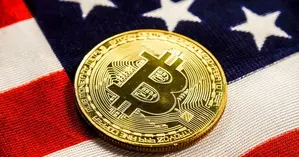BRICS de-dollarization efforts are hitting significant roadblocks right now, and the situation is turning out quite differently from what many advocates had expected. While local currency trade between member nations has actually grown through various bilateral deals, a unified challenge to dollar dominance is still a distant prospect. Individual countries have been pursuing their own de-dollarisation challenges, but getting coordinated action on international payment alternatives has been facing resistance from both internal divisions among members and also external pressure from the United States.
Also Read: BRICS Removing the US Dollar in Iron Ore Deals
Mohammad Bagher Ghalibaf, speaker of the Iranian parliament, made his position clear at the deBlock Summit. He said that Iran wants to do trade with other countries where they pay in digital currencies, and that it’s a necessity for them. This approach through cryptocurrencies shows how the BRICS de-dollarization movement has become quite fragmented, with each nation going after its own path.
Exploring BRICS de-dollarization Challenges And Local Currency Trade Trends

Trump’s Threats Are Reshaping Strategy
Donald Trump actually posted on Truth Social back in January 2025, and his message was pretty direct. He wrote that they require a commitment from these countries that they will neither create a new BRICS currency, nor back any other currency to replace the mighty US dollar, or they will face 100% tariffs and should expect to say goodbye to selling into the wonderful US economy.
Trump’s tariff threats successfully deterred several members from pursuing BRICS de-dollarization more aggressively. Indonesia’s Foreign Ministry spokesperson told reporters that the country is not interested in the issue of de-dollarisation right after Trump issued his warnings. Trump’s threats pushed Brazilian President Luiz Inácio Lula da Silva to drop the common currency idea from Brazil’s 2025 presidency agenda shortly after he made them, though Lula stayed defiant at the Rio summit. At that summit, Lula stated that they don’t want an emperor, and that they are sovereign countries. He also said it’s not right for a president of a country the size of the United States to threaten the world online.
Bilateral Progress Is Happening Without Unity
Russian Finance Minister Anton Siluanov announced that Russia and China have settled 99.1% of trade payments in rubles and yuan. This China Russia currency strategy has emerged mainly from necessity, as sanctions have left Moscow with pretty limited options for conducting trade. A similar local currency trade agreement between China and Brazil has actually been in place since 2023, and it eliminates the dollar as an intermediary for their $100 billion annual trade.
Egyptian Prime Minister Mostafa Madbouly confirmed back in July 2025 that BRICS member states are increasingly adopting local currency settlements as part of their strategy. Russian President Vladimir Putin made some remarks in January 2025, where he said that their countries have almost completely switched to national currencies in mutual settlements, are striving to build sustainable channels of credit and banking interaction, and are working on interfacing national payment systems. Even with these bilateral successes, a coordinated approach to de-dollarisation challenges has been missing.
India’s Opposition Is Blocking Unity
India has been particularly vocal in opposing a common BRICS currency, and their position matters quite a bit. External Affairs Minister Subrahmanyam Jaishankar stated back in March 2025 that the dollar as the reserve currency is the source of international economic stability, and right now, what they want in the world is more economic stability, not less. Commerce Minister Piyush Goyal reinforced this stance in February when he said to imagine them having a currency shared with China, adding that they have no plans and that it is impossible to think of a BRICS currency.
Kremlin Spokesperson Dmitry Peskov has stated that while BRICS is exploring joint investment platforms, it’s not actually looking to set up a common currency. Chinese state media has been calling for greater coordination to achieve BRICS de-dollarization goals, which is indirectly admitting that such coordination doesn’t really exist at the moment.
Also Read: Alert: Iran Teams With BRICS for Crypto Sanctions Workaround
The dollar’s advantages in the international financial system remain unmatched, at least for now. Divergent national interests, along with varying levels of economic development and fear of US retaliation, continue impeding any coordinated expansion of the China-Russia currency strategy to other members. At the time of writing, BRICS de-dollarization through international payment alternatives remains more of an aspiration than a reality, with bilateral agreements for local currency trade growing but a unified action plan still being distant. The de-dollarisation challenges extend beyond just technical payment systems and actually root themselves in fundamental geopolitical divisions that these bilateral currency deals simply cannot overcome on their own.






